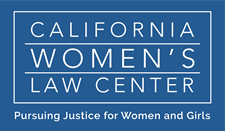-
- One in four women, and one in ten men, in the U.S. have experienced contact sexual violence, physical violence, and/or stalking by an intimate partner; more than half of all transgender people have experienced IPV.
- On average, more than two women each day are killed by a current or former intimate partner.
- Early intervention is key to preventing intimate partner violence, as violent behavior is often learned between ages 12-18.
- In the U.S., in eight out of ten cases of rape, the victim knew their perpetrator.
- Eighty percent of rapes are reported by white women, but women of color are more likely to have been assaulted and are reluctant to report their assailant
- Between 25-85% of women experience sexual harassment in the workplace; only 6-13% of victims report it to their employer or to law enforcement.
Violence Against Women
Harassment, assault, and violence impact women in their homes, schools, and workplaces. When CWLC was founded in 1989, much of our work focused on obtaining justice for women who had suffered abusive relationships. Today, ending domestic violence and sexual assault remains a top priority.
Many factors contribute to the prevalence of violence and harassment, and much of CWLC’s work helps to combat these injustices. Indirectly, the work we do to close the wage gap and increase women’s economic stability helps empower women to leave abusive relationships and report workplace harassment. And, our efforts to help women secure safe and affordable housing means they are less likely to experience homelessness and the related high risk of sexual violence. Most directly, CWLC protects the safety of women and girls by focusing on intimate partner violence and campus sexual assault and harassment.
INTIMATE PARTNER VIOLENCE (see related resources)

Intimate partner violence (IPV, also called domestic violence) can be physical, verbal, sexual, or emotional, and often involves intimidation or economic deprivation. It occurs in all cultures and impacts people of all races, ethnicities, and religions. CWLC stands with survivors by representing plaintiffs seeking restraining orders, training legal advocates on the nuances of this law, and producing detailed guides for lawyers and non-lawyers who are navigating the court system. We also facilitate trainings on healthy relationships for high schools students.
CONSIDER THIS
SEXUAL ASSAULT & HARRASSMENT (see related resources)

A large majority of women report experiencing some kind of sexual harassment or assault in their lifetime. For many, this happens at work. CWLC fights workplace harassment and discrimination by representing victims and by advocating for policies that protect workers, like the elimination of non-disclosure agreements. CWLC supports survivors of assault by sponsoring legislation like the Justice for Victims Act, which eliminated the statute of limitations on rape and empowers women to seek legal justice when they are ready. To address the pervasive culture of rape on college campuses, CWLC delivers trainings to students, educators, and attorneys across California to help them better understand Title IX’s role in combating campus sexual assault and harassment. To learn more about CWLC’s other work on Title IX enforcement, click here.
CONSIDER THIS
